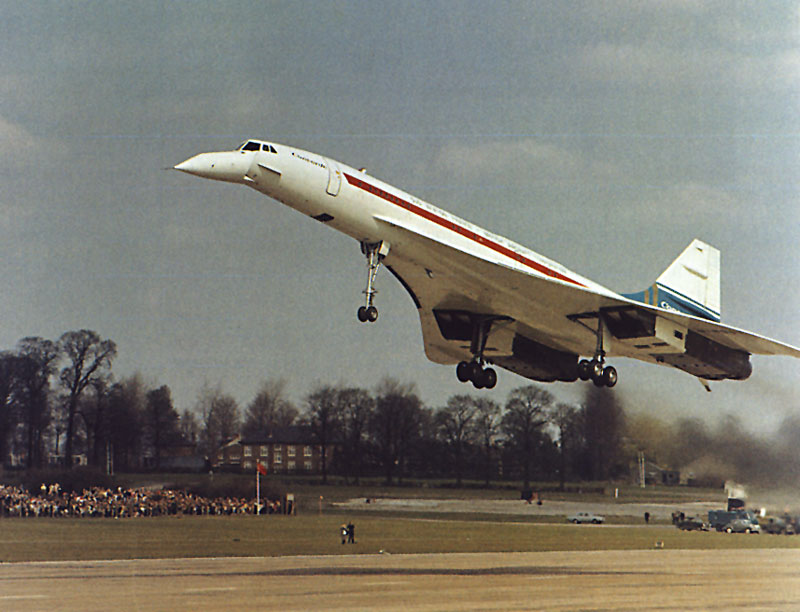Concorde: the ride of a lifetime
Half a century has passed since the first flight of the Concorde and the start of the supersonic dream.
The flight was supposed to take place on March 1, 1969, but was postponed due to thick fog. March 2, a Sunday, didn’t look much better, but the Mirage jet fighter chase plane was dispatched and reported conditions above the clouds looked promising and sure enough, the sun burned away the mist and the stage was set for Europe’s leap into the supersonic age.
Concorde might have been super futuristic but preparations for this day had already been in motion for at least two decades. After World War 2, it did not take long for war-ravaged Europe to enter the jet age, with the de Havilland Comet jetliner flying for the first time on July 27, 1949, and entering service with BOAC on May 2, 1952. On the other side of the English Channel, Sud Aviation’s Caravelle twin-jet launched on May 27, 1955, and was in service with Scandinavian Airlines (SAS) on April 26, 1959.
The aerospace establishment of both countries were swept up in the post-war futurist dream. In 1960, the global population was less than three billion, a barrel of oil was $2.91 (adjusted for inflation, that’s $24.11 in 2019 money), and the ecological cost of burning fossil fuel in the high atmosphere not even considered. Not even the sky was the limit. Supersonic air travel wasn’t just considered desirable, it was inevitable.
1960 was the year Sud Aviation, who were hard at work creating the supersonic Super Caravelle, and the Bristol Aeroplane Company, with their Bristol 223, joined forces, as the two paper planes were virtually identical, and the cost of turning them into the real thing was proving to be exceedingly steep. Another factor that tipped the French towards a cross-channel collaboration was that they had no engine for their bird, and intended to buy British powerplants anyway (as they had done for the Caravelle).
Air travel enjoyed double-digit growth throughout the 1960s, and both the United States and the Soviet Union had thriving space programmes which put Yuri Gagarin in orbit on April 12, 1961, with President Kennedy announcing the intention of landing a man on the moon just a month later, on May 25. Any techno fetish that could be dreamed up was surely destined to become reality – from flying cars and domestic help robots to lunar shuttles and human colonies in space.
To perfectly illustrate the overlap between the optimism of the age and air travel, in 1964, Austrian journalist Gerhard Pistor asked a Viennese travel agent if he could book a trip to the moon; his request was forwarded to Pan Am who took only two weeks to accept his reservation, with a first flight date set for the year 2000. They took 93,000 more bookings for lunar flights, closing the waiting list in 1971 because of the cost of sending out numbered membership cards to the First Moon Flights Club.
As 1960s continued, Boeing created the 747 jumbo jet, but at the time, the enormous machine was considered to be merely an interim peoplemover, and that once the supersonics came online, whatever passenger-carrying 747s had been built would be converted to freighters. Boeing struggled to entice engineers away from its own SST, the Mach 3, all-titanium 2707, to work on the 747, as it was considered to be, at best, lacking glamour, and at worst, a dodo.
Construction of finished airframes was to happen in both countries – in France at Toulouse, and in the United Kingdom at Bristol. Both sites built a prototype each, with the French machine, registered F-WSST, ship 001, first to roll out of the factory for public and media, on December 11, 1967. 1968 was spent on engine runs, taxi tests, and high speed runs including raising the nose to check the effectiveness of the flight controls.
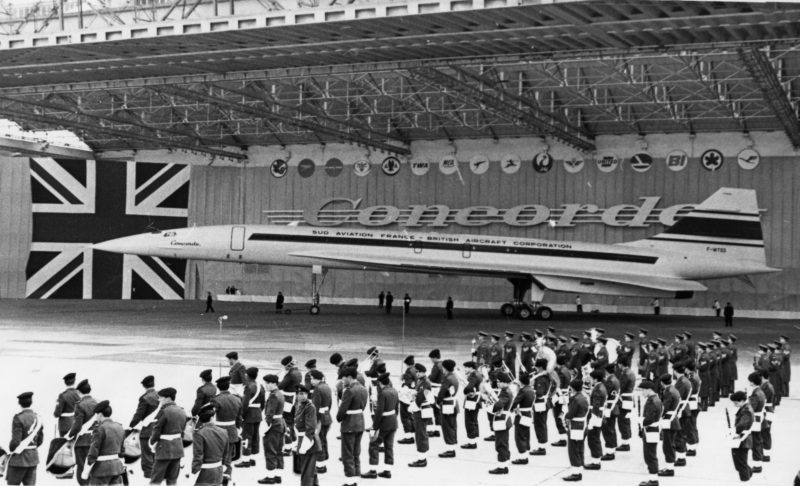
At the time of the first flight, 73 Concordes had been optioned by 16 airlines:
Pan Am (8), Air France (8), BOAC (later British Airways; 8), Continental Airlines (3), American Airlines (6), TWA (6), Middle East Airlines of Lebanon (2), Qantas (4), Air-India (2), Japan Airlines (3), Sabena (of Belgium; 2), Eastern Airlines (US domestic major; 6), United Airlines (6), Braniff International (3), Lufthansa (3) and Air Canada (3). Unfortunately, these were as binding as Pan Am’s First Moon Flights Club, as no money changed hands. The airlines were waiting to see how the project developed before handing over hard cash.
With a day lost to weather, the first flight, on March 2, 1969, had the eyes of the world watching. The Soviet Union had successfully test-flown their SST, the Tupolev Tu-144, on the last day of 1968, putting more pressure on the gang in Toulouse and their British colleagues.
Aerospatiale test pilot André Turcat led his crew to the ship, and the Rolls-Royce/SNECMA 593 turbojets were started.
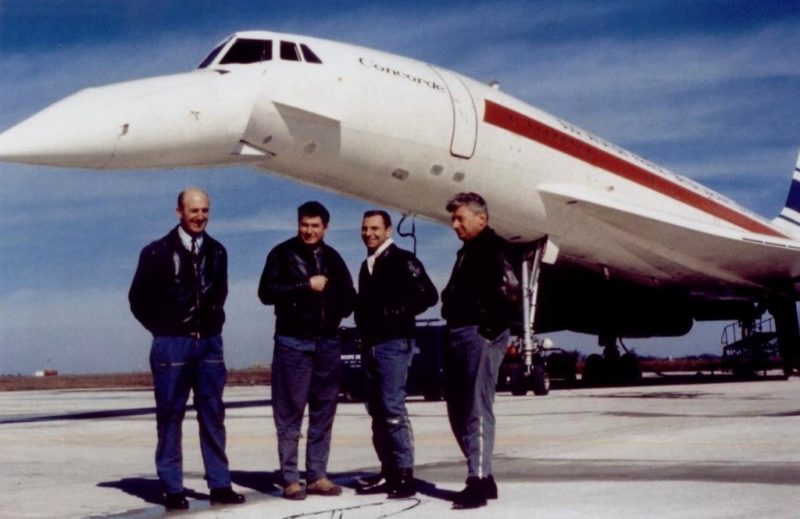
Fire trucks took their positions, and TV cameras went live, beaming to millions on five continents. With the Mirage chase plane for company, Concorde 001 took off, with the emotional English-language commentary by Raymond Baxter remembered to this day:
“She flies, she flies!”
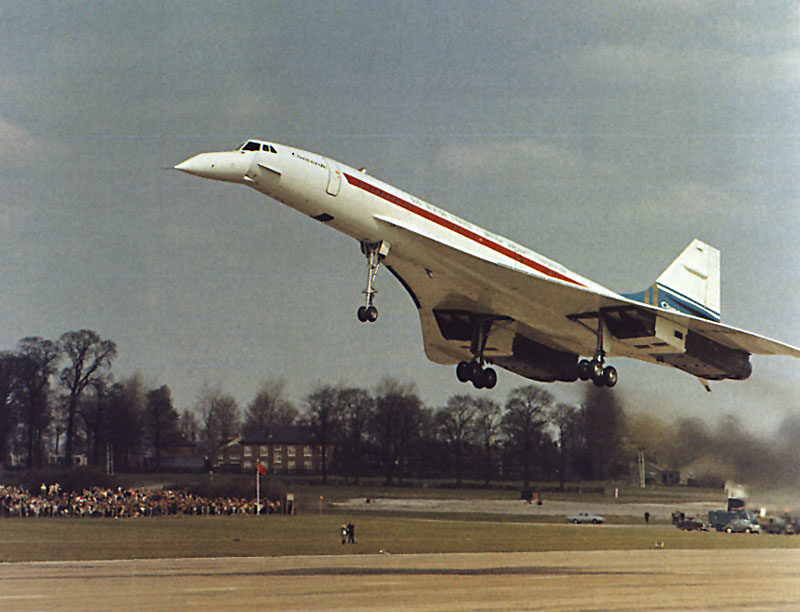
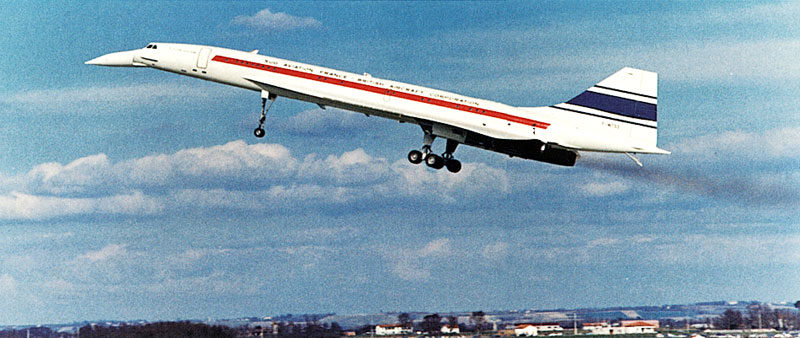
Forty minutes later she was back, having ventured up to 10,000 feet and 300 miles per hour, a fraction of what she would later achieve (60,000 feet, 1,350 mph), braking parachute (not used on production birds) streaming from her tail to help decelerate. Handling characteristics were declared to be better than predicted, better than in the simulator. The only factor that would slow the development of the Concorde from here on was caution. The hardware itself was virtually without flaws. The British prototype, G-BSST, took to the air a month later, on April 9, and F-WSST went supersonic for the first time on October 1.
The inability to fly over land due to the sonic boom, the skyrocketing cost of fuel after the 1973 oil crisis, growing environmental awareness, and the incredible productivity of subsonic widebody airliners meant that only the sales options of state-owned Air France and BOAC/British Airways turned into orders, for eight ships each, plus four test airframes; and the Tupolev Tu-144 only managed 55 passenger flights.
The supersonic dream turned out to be just that – a dream. But what a dream. Concorde flew the Atlantic daily for 27 years, carrying over three million passengers across the pond in just three hours via the edge of space. A fragment of the futuristic 1950s vision of the alternate future made real. Half a century later, its appeal, its glamour, its science fiction fascination has not diminished, indeed, has only grown. Did British Airways really have an airliner in its fleet that the Royal Air Force couldn’t catch? Was it really possible to fly from Paris to Caracas, from London to New York, from Bahrein to Singapore, in only three hours? The curvature of the earth visible in the cruise? Flying faster than the earth’s rotation of the sun, the sun rising out of the west? Incredible though it may seem, the answer is yes.
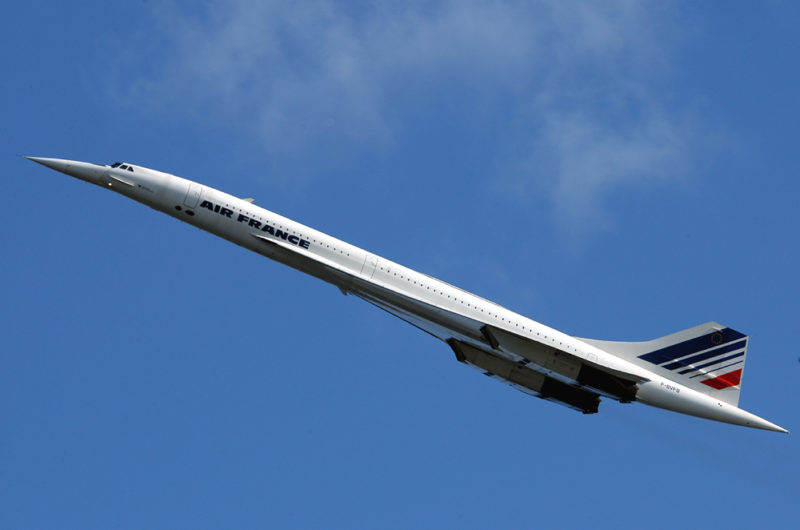
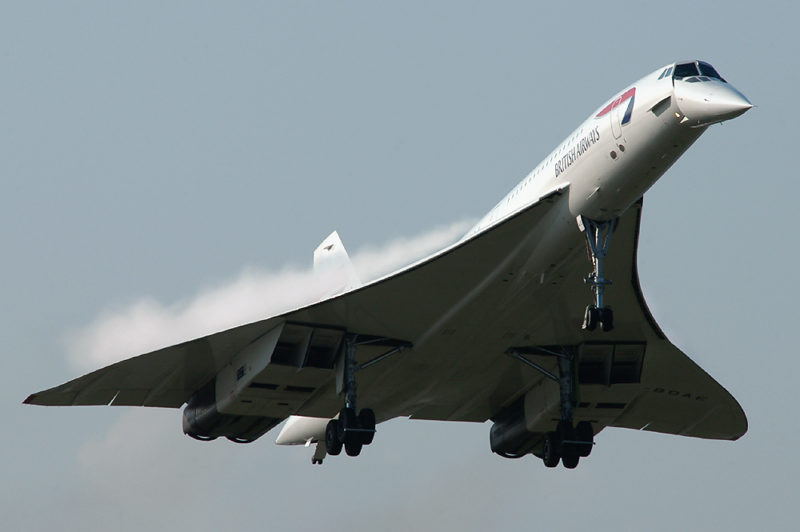
Below is a detail trip report on my “Ultimate Flight” BA002 Concorde from New York to London in 2003.


